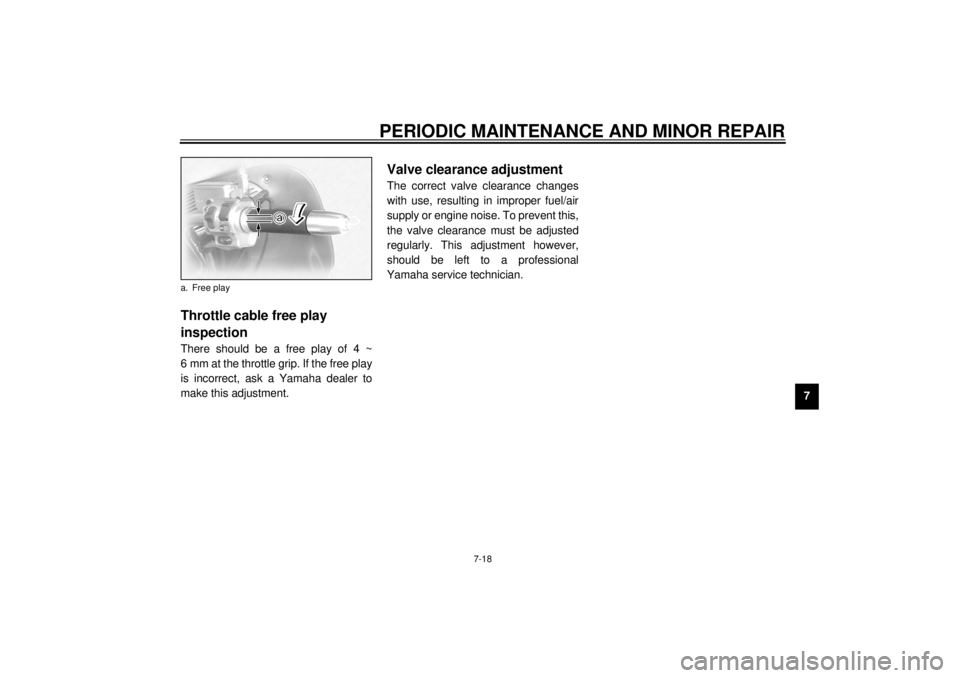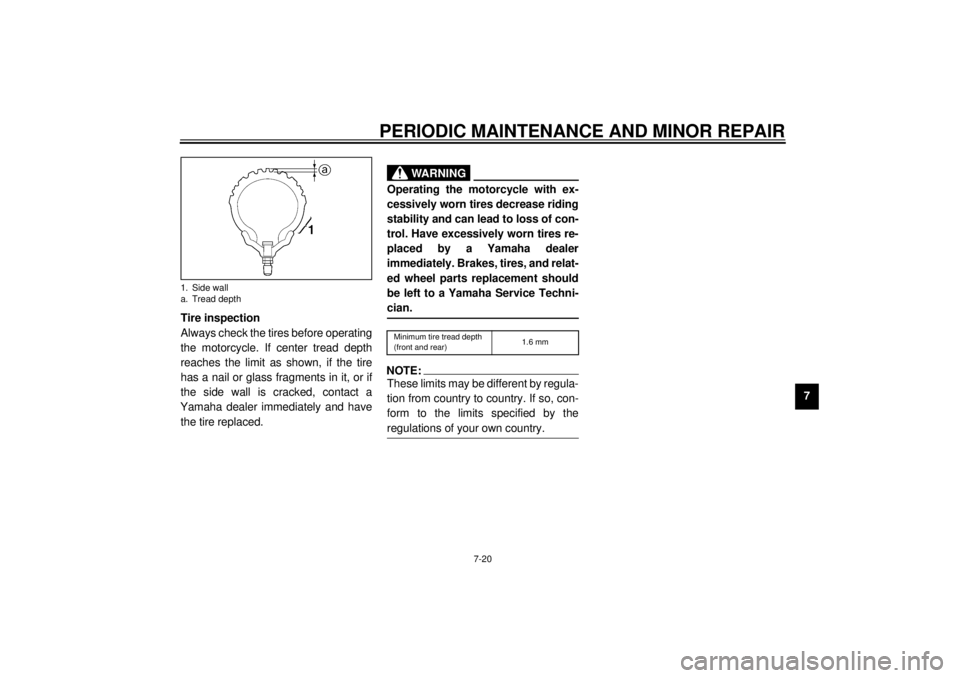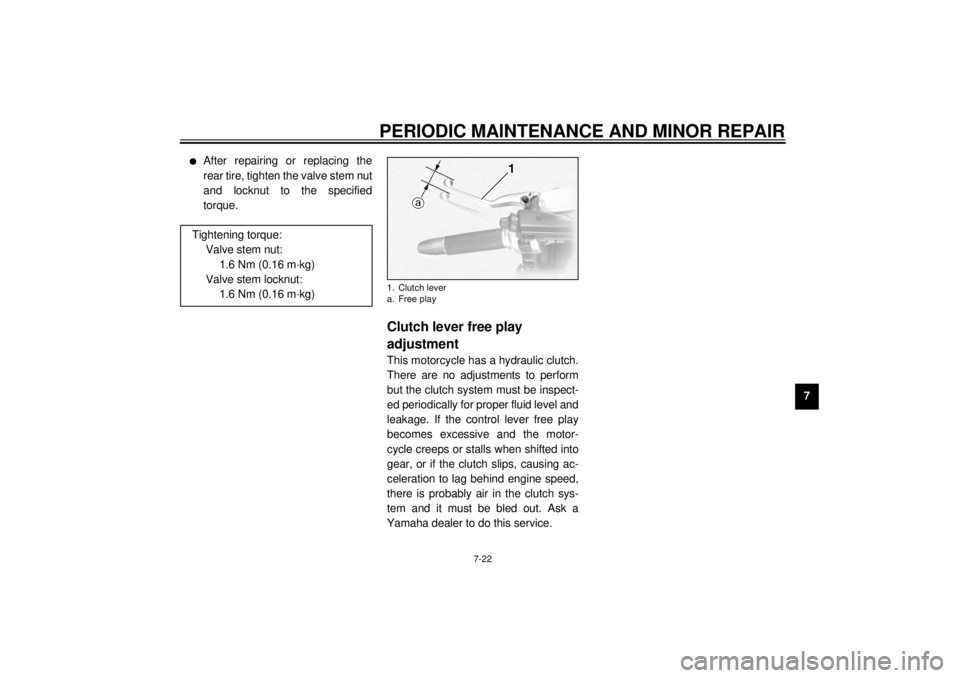Page 81 of 121
PERIODIC MAINTENANCE AND MINOR REPAIR
7-15
7
EAU01877*
Air filtersThe air filter should be cleaned at the
specified intervals. It should be cleaned
more frequently if you are riding in un-
usually wet or dusty areas.
1. Remove cowlings A and B. (See
pages 7-6 and 7-7 for removal and
installation procedures.)For each air filter:
2. Loosen the carburetor intake joint
clamp screw and pull off the air fil-
ter.3. Remove the air filter case cover by
removing the bolts.1. Air filter case
1. Carburetor intake joint clamp screw
1. Air filter case bolt (´ 5)
E_5jc_Periodic.fm Page 15 Saturday, October 16, 1999 1:10 PM
Page 82 of 121
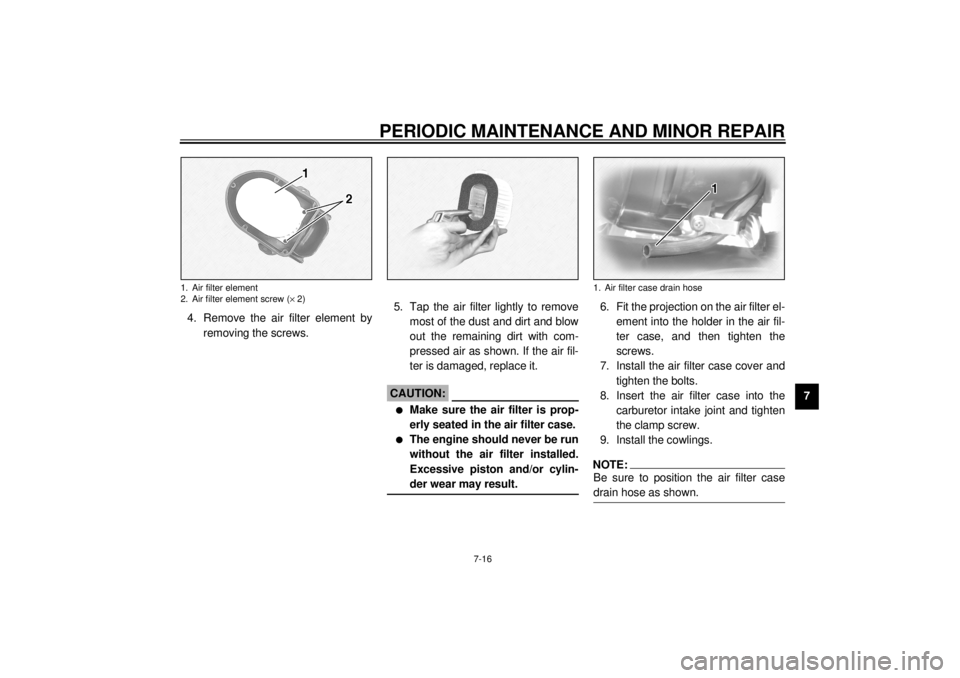
PERIODIC MAINTENANCE AND MINOR REPAIR
7-16
7 4. Remove the air filter element by
removing the screws.5. Tap the air filter lightly to remove
most of the dust and dirt and blow
out the remaining dirt with com-
pressed air as shown. If the air fil-
ter is damaged, replace it.
EC000082
CAUTION:@ l
Make sure the air filter is prop-
erly seated in the air filter case.
l
The engine should never be run
without the air filter installed.
Excessive piston and/or cylin-
der wear may result.
@
6. Fit the projection on the air filter el-
ement into the holder in the air fil-
ter case, and then tighten the
screws.
7. Install the air filter case cover and
tighten the bolts.
8. Insert the air filter case into the
carburetor intake joint and tighten
the clamp screw.
9. Install the cowlings.NOTE:@ Be sure to position the air filter case
drain hose as shown. @
1. Air filter element
2. Air filter element screw (´ 2)
1. Air filter case drain hose
E_5jc_Periodic.fm Page 16 Saturday, October 16, 1999 1:10 PM
Page 83 of 121

PERIODIC MAINTENANCE AND MINOR REPAIR
7-17
7
EAU00630
Carburetor adjustmentThe carburetors are important parts of
the engine and require very sophisti-
cated adjustment. Most adjustments
should be left to a Yamaha dealer who
has the professional knowledge and
experience to do so. However, the idle
speed may be adjusted by the owner
as part of routine maintenance.
EC000095
CAUTION:@ The carburetors were set at the
Yamaha factory after many tests. If
they are changed, poor engine per-
formance and damage may result. @
EAU01168
Idle speed adjustmentNOTE:@ A diagnostic tachometer must be used
for this procedure. @1. Attach the tachometer. Start the
engine and warm it up for a few
minutes at approximately 1,000 to
2,000 r/min. Occasionally rev the
engine to 4,000 to 5,000 r/min.
The engine is warm when it quick-
ly responds to the throttle.2. Set the idle to the specified engine
speed by adjusting the throttle
stop screw. Turn the screw in di-
rection
a to increase engine
speed and in direction
b to de-
crease engine speed.
NOTE:@ If the specified idle speed cannot be
obtained by performing the above ad-
justment, consult a Yamaha dealer. @1. Throttle stop screw
Standard idle speed:
950 ~ 1,050 r/min
E_5jc_Periodic.fm Page 17 Saturday, October 16, 1999 1:10 PM
Page 84 of 121
PERIODIC MAINTENANCE AND MINOR REPAIR
7-18
7
EAU00635
Throttle cable free play
inspectionThere should be a free play of 4 ~
6 mm at the throttle grip. If the free play
is incorrect, ask a Yamaha dealer to
make this adjustment.
EAU00637
Valve clearance adjustmentThe correct valve clearance changes
with use, resulting in improper fuel/air
supply or engine noise. To prevent this,
the valve clearance must be adjusted
regularly. This adjustment however,
should be left to a professional
Yamaha service technician.
a. Free play
E_5jc_Periodic.fm Page 18 Saturday, October 16, 1999 1:10 PM
Page 85 of 121
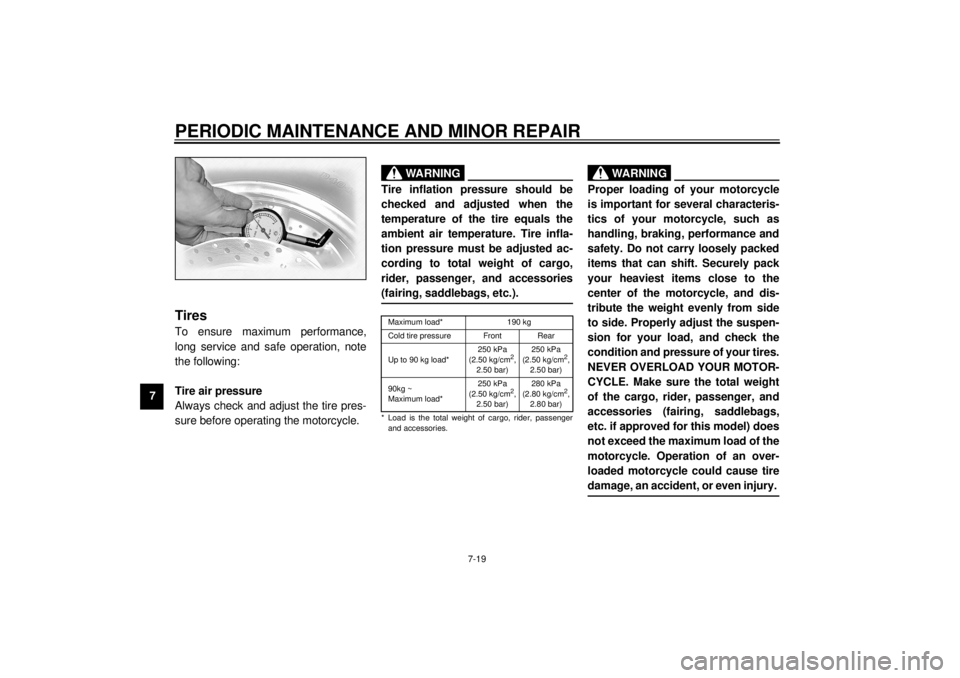
PERIODIC MAINTENANCE AND MINOR REPAIR
7-19
7
EAU01839
TiresTo ensure maximum performance,
long service and safe operation, note
the following:
Tire air pressure
Always check and adjust the tire pres-
sure before operating the motorcycle.
EWA00018
WARNING
@ Tire inflation pressure should be
checked and adjusted when the
temperature of the tire equals the
ambient air temperature. Tire infla-
tion pressure must be adjusted ac-
cording to total weight of cargo,
rider, passenger, and accessories
(fairing, saddlebags, etc.). @CE-37EEW000083
WARNING
@ Proper loading of your motorcycle
is important for several characteris-
tics of your motorcycle, such as
handling, braking, performance and
safety. Do not carry loosely packed
items that can shift. Securely pack
your heaviest items close to the
center of the motorcycle, and dis-
tribute the weight evenly from side
to side. Properly adjust the suspen-
sion for your load, and check the
condition and pressure of your tires.
NEVER OVERLOAD YOUR MOTOR-
CYCLE. Make sure the total weight
of the cargo, rider, passenger, and
accessories (fairing, saddlebags,
etc. if approved for this model) does
not exceed the maximum load of the
motorcycle. Operation of an over-
loaded motorcycle could cause tire
damage, an accident, or even injury. @
Maximum load* 190 kg
Cold tire pressure Front Rear
Up to 90 kg load*250 kPa
(2.50 kg/cm
2,
2.50 bar)250 kPa
(2.50 kg/cm
2,
2.50 bar)
90kg ~
Maximum load*250 kPa
(2.50 kg/cm
2,
2.50 bar)280 kPa
(2.80 kg/cm
2,
2.80 bar)
* Load is the total weight of cargo, rider, passenger
and accessories.
E_5jc_Periodic.fm Page 19 Saturday, October 16, 1999 1:10 PM
Page 86 of 121
PERIODIC MAINTENANCE AND MINOR REPAIR
7-20
7 Tire inspection
Always check the tires before operating
the motorcycle. If center tread depth
reaches the limit as shown, if the tire
has a nail or glass fragments in it, or if
the side wall is cracked, contact a
Yamaha dealer immediately and have
the tire replaced.
EW000079
WARNING
@ Operating the motorcycle with ex-
cessively worn tires decrease riding
stability and can lead to loss of con-
trol. Have excessively worn tires re-
placed by a Yamaha dealer
immediately. Brakes, tires, and relat-
ed wheel parts replacement should
be left to a Yamaha Service Techni-
cian. @CE-26ENOTE:@ These limits may be different by regula-
tion from country to country. If so, con-
form to the limits specified by the
regulations of your own country. @
1. Side wall
a. Tread depth
Minimum tire tread depth
(front and rear)1.6 mm
E_5jc_Periodic.fm Page 20 Saturday, October 16, 1999 1:10 PM
Page 87 of 121
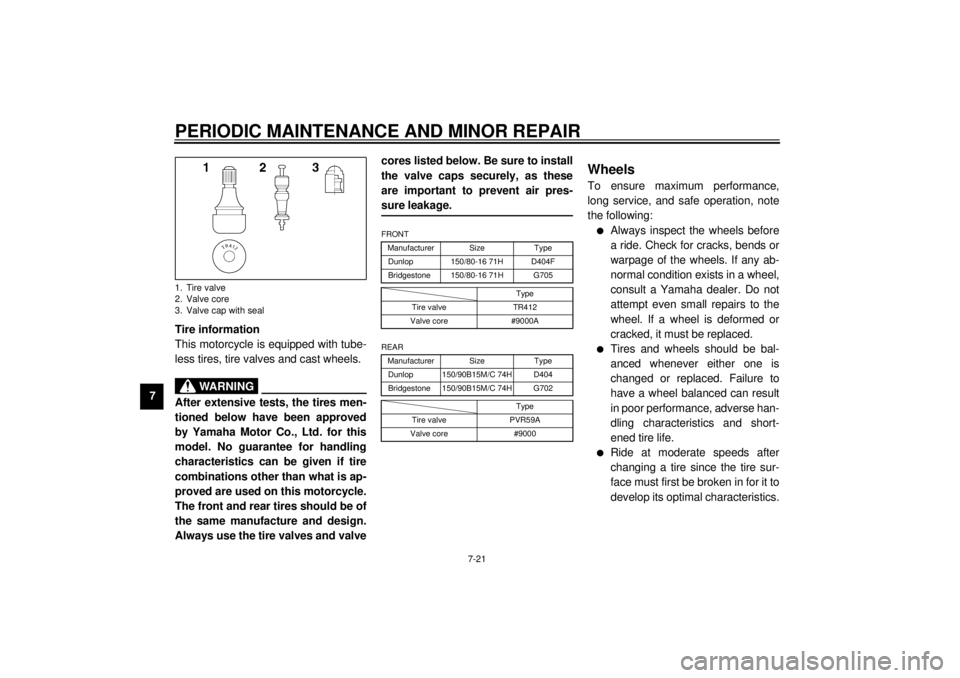
PERIODIC MAINTENANCE AND MINOR REPAIR
7-21
7Tire information
This motorcycle is equipped with tube-
less tires, tire valves and cast wheels.
EW000132
WARNING
@ After extensive tests, the tires men-
tioned below have been approved
by Yamaha Motor Co., Ltd. for this
model. No guarantee for handling
characteristics can be given if tire
combinations other than what is ap-
proved are used on this motorcycle.
The front and rear tires should be of
the same manufacture and design.
Always use the tire valves and valvecores listed below. Be sure to install
the valve caps securely, as these
are important to prevent air pres-
sure leakage.
@CE-41E
CE-42EEAU01230
WheelsTo ensure maximum performance,
long service, and safe operation, note
the following:l
Always inspect the wheels before
a ride. Check for cracks, bends or
warpage of the wheels. If any ab-
normal condition exists in a wheel,
consult a Yamaha dealer. Do not
attempt even small repairs to the
wheel. If a wheel is deformed or
cracked, it must be replaced.
l
Tires and wheels should be bal-
anced whenever either one is
changed or replaced. Failure to
have a wheel balanced can result
in poor performance, adverse han-
dling characteristics and short-
ened tire life.
l
Ride at moderate speeds after
changing a tire since the tire sur-
face must first be broken in for it to
develop its optimal characteristics.
1. Tire valve
2. Valve core
3. Valve cap with seal
FRONT
Manufacturer Size Type
Dunlop 150/80-16 71H D404F
Bridgestone 150/80-16 71H G705
Type
Tire valve TR412
Valve core #9000A
REAR
Manufacturer Size Type
Dunlop 150/90B15M/C 74H D404
Bridgestone 150/90B15M/C 74H G702
Type
Tire valve PVR59A
Valve core #9000
E_5jc_Periodic.fm Page 21 Saturday, October 16, 1999 1:10 PM
Page 88 of 121
PERIODIC MAINTENANCE AND MINOR REPAIR
7-22
7
l
After repairing or replacing the
rear tire, tighten the valve stem nut
and locknut to the specified
torque.
EAU00695
Clutch lever free play
adjustmentThis motorcycle has a hydraulic clutch.
There are no adjustments to perform
but the clutch system must be inspect-
ed periodically for proper fluid level and
leakage. If the control lever free play
becomes excessive and the motor-
cycle creeps or stalls when shifted into
gear, or if the clutch slips, causing ac-
celeration to lag behind engine speed,
there is probably air in the clutch sys-
tem and it must be bled out. Ask a
Yamaha dealer to do this service. Tightening torque:
Valve stem nut:
1.6 Nm (0.16 m·kg)
Valve stem locknut:
1.6 Nm (0.16 m·kg)1. Clutch lever
a. Free play
E_5jc_Periodic.fm Page 22 Saturday, October 16, 1999 1:10 PM
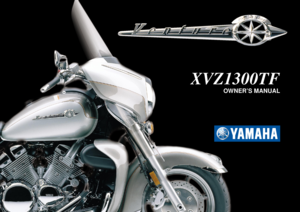 1
1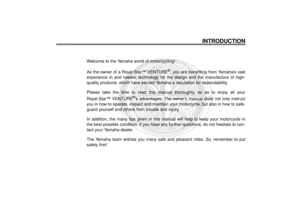 2
2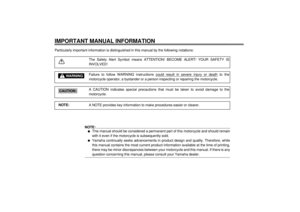 3
3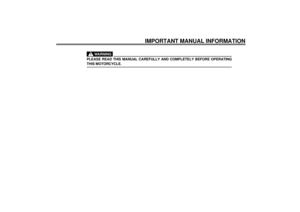 4
4 5
5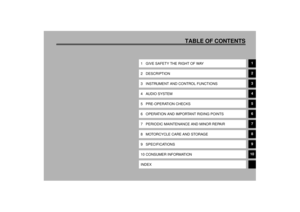 6
6 7
7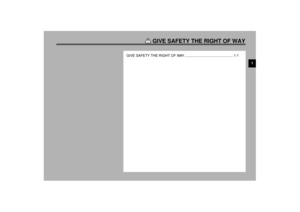 8
8 9
9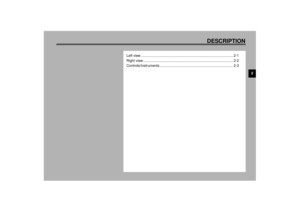 10
10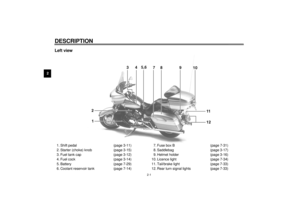 11
11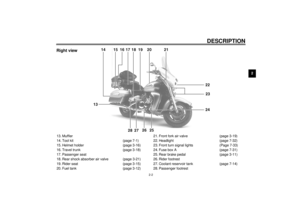 12
12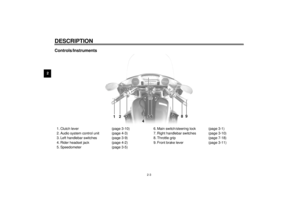 13
13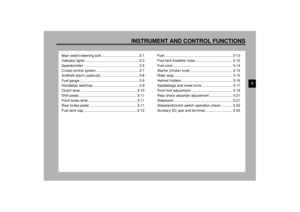 14
14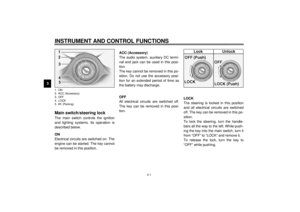 15
15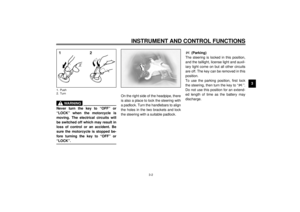 16
16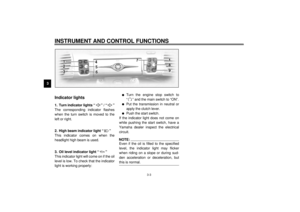 17
17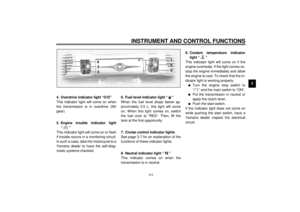 18
18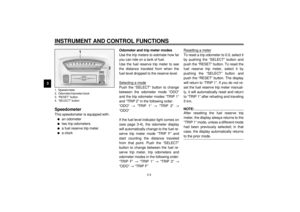 19
19 20
20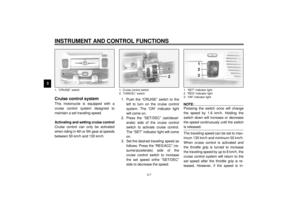 21
21 22
22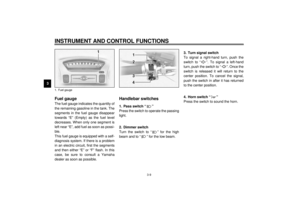 23
23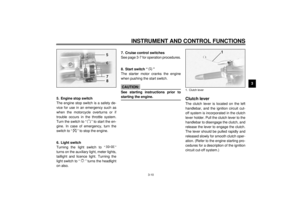 24
24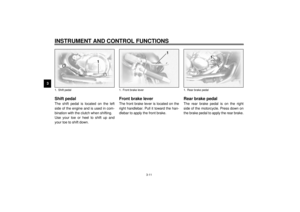 25
25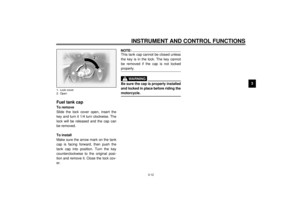 26
26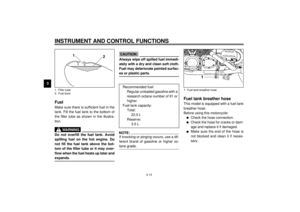 27
27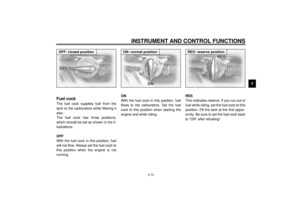 28
28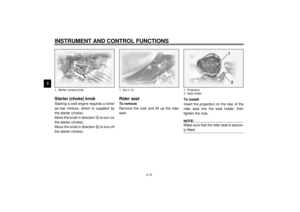 29
29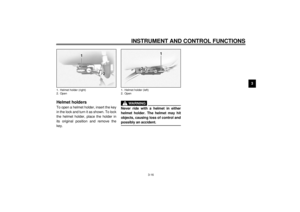 30
30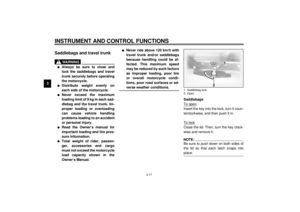 31
31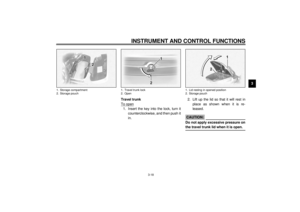 32
32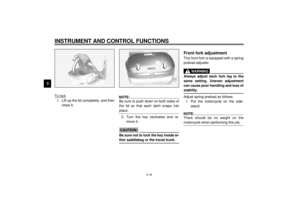 33
33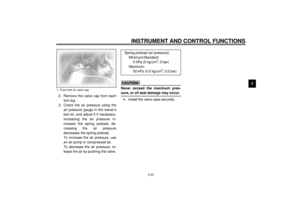 34
34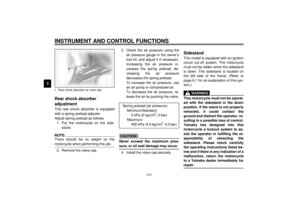 35
35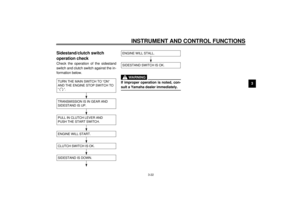 36
36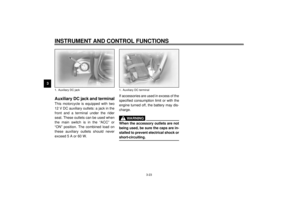 37
37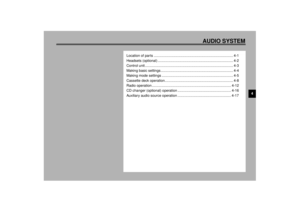 38
38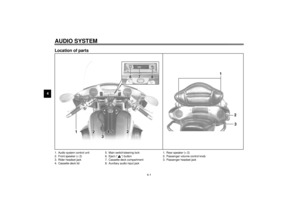 39
39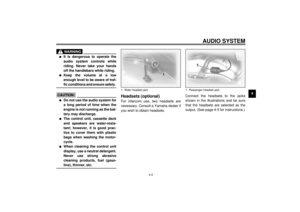 40
40 41
41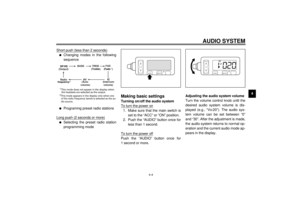 42
42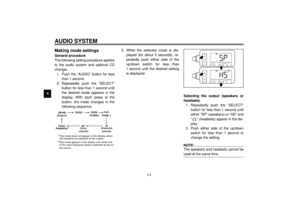 43
43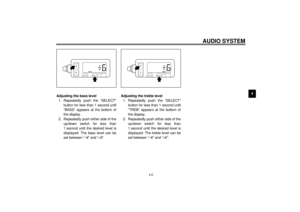 44
44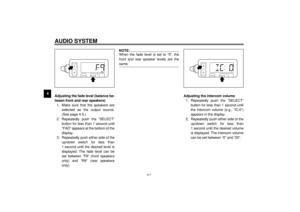 45
45 46
46 47
47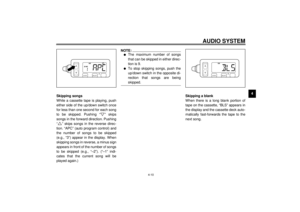 48
48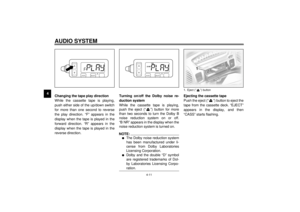 49
49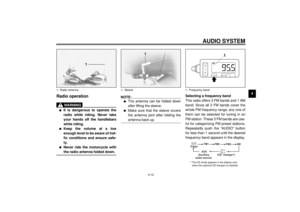 50
50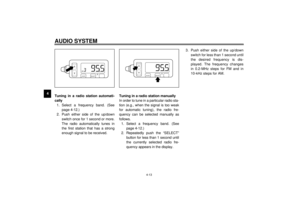 51
51 52
52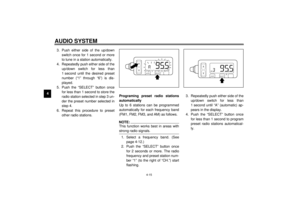 53
53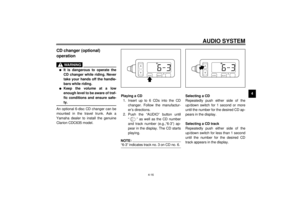 54
54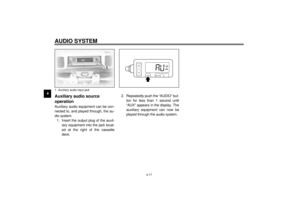 55
55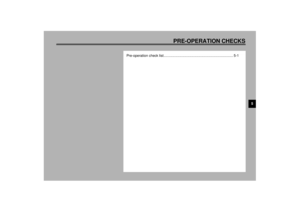 56
56 57
57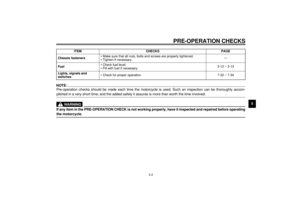 58
58 59
59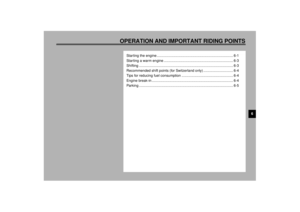 60
60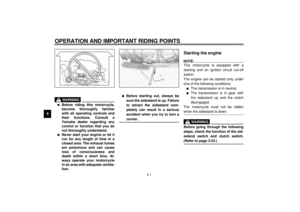 61
61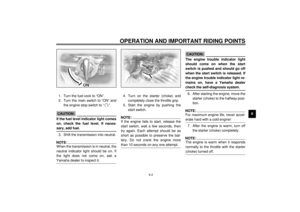 62
62 63
63 64
64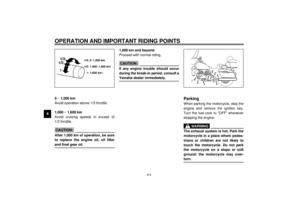 65
65 66
66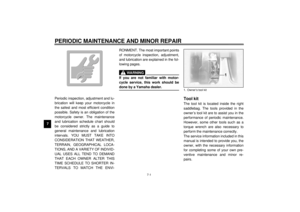 67
67 68
68 69
69 70
70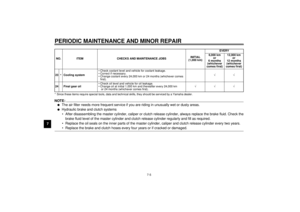 71
71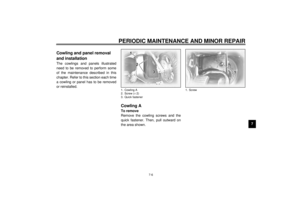 72
72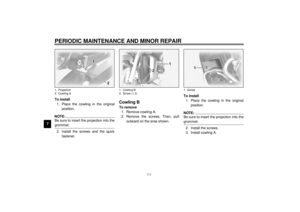 73
73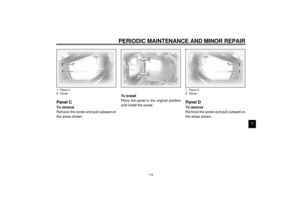 74
74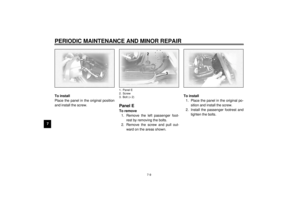 75
75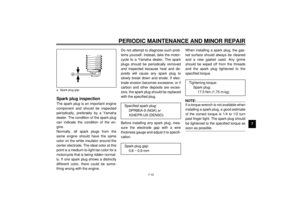 76
76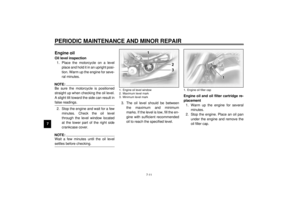 77
77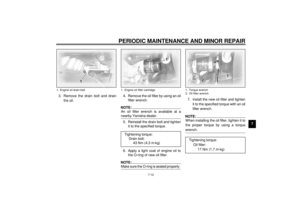 78
78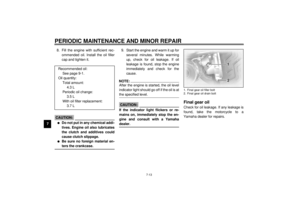 79
79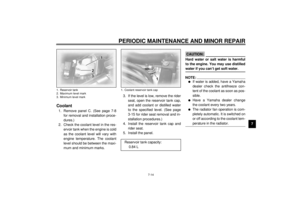 80
80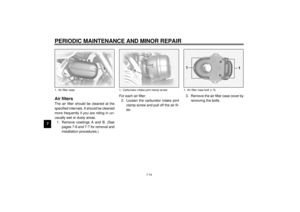 81
81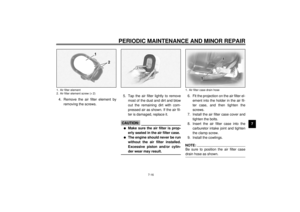 82
82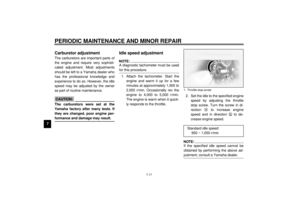 83
83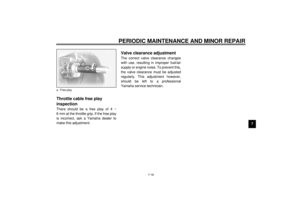 84
84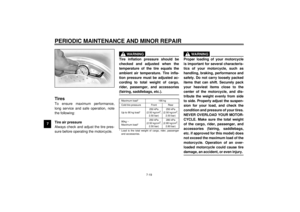 85
85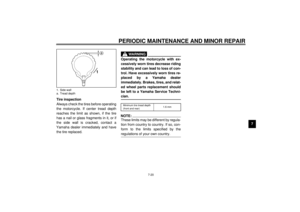 86
86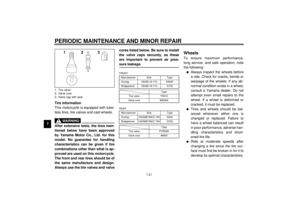 87
87 88
88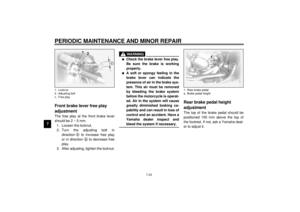 89
89 90
90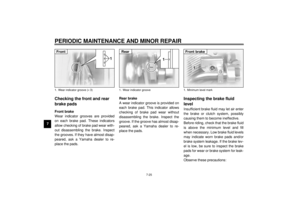 91
91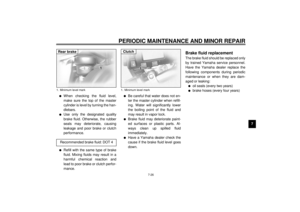 92
92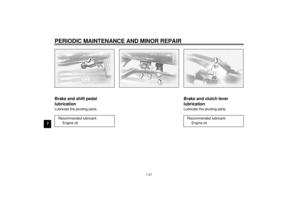 93
93 94
94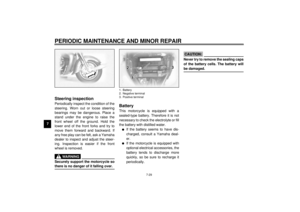 95
95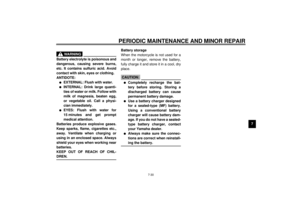 96
96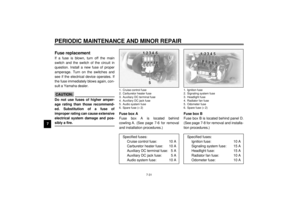 97
97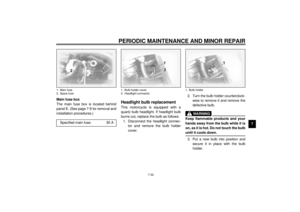 98
98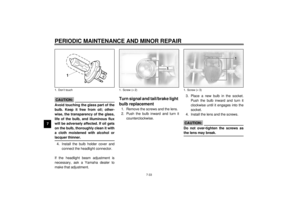 99
99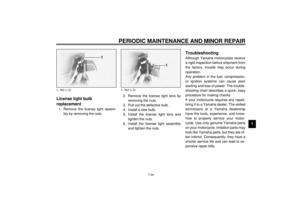 100
100 101
101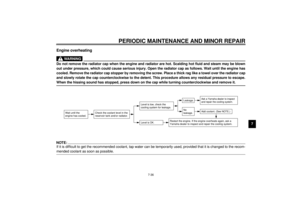 102
102 103
103 104
104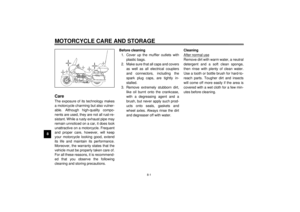 105
105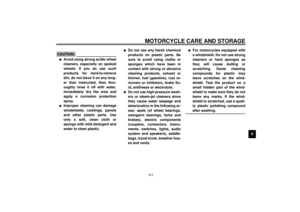 106
106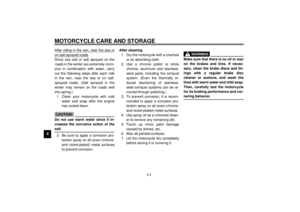 107
107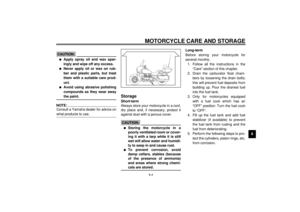 108
108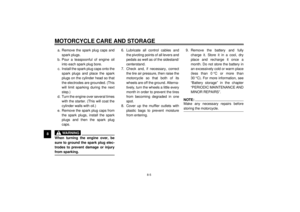 109
109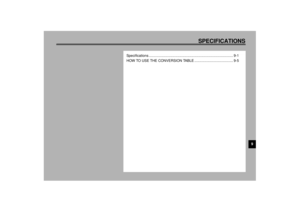 110
110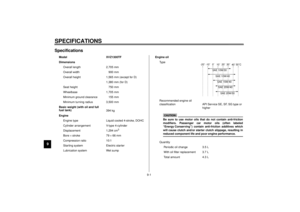 111
111 112
112 113
113 114
114 115
115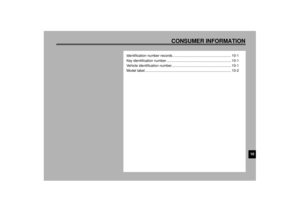 116
116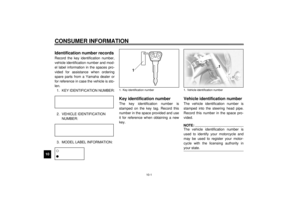 117
117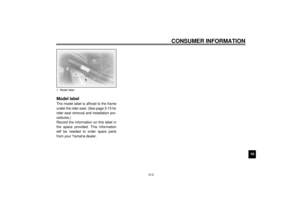 118
118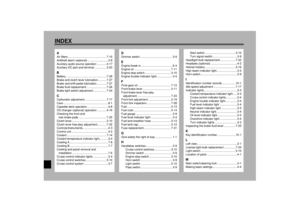 119
119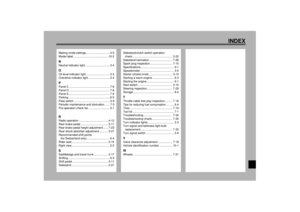 120
120


